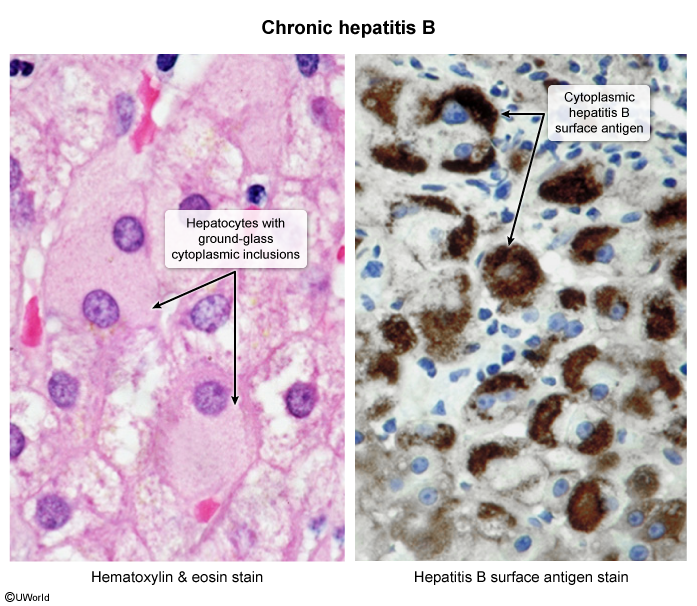Hepatitis B Virus (HBV) Infection
Article Sections
Introduction
Hepatitis B virus (HBV) is a partially double-stranded DNA virus belonging to the Hepadnaviridae family. Approximately 2 billion people worldwide have had HBV infection, with approximately 250-400 million living with chronic HBV infection. HBV primarily targets hepatocytes, leading to both acute and chronic liver disease. Chronic infection can result in cirrhosis and independently increases the risk of hepatocellular carcinoma (HCC).
Epidemiology and transmissionHBV is endemic worldwide, with a particularly high prevalence in sub-Saharan Africa, East Asia, and the Pacific Islands. Key routes of transmission include:
- Vertical transmission: From mother to child during childbirth (ie, perinatal transmission). Usually occurs during passage through the birth canal rather than transplacentally.
- Sexual transmission: Unprotected sexual contact with an infected partner. Higher risk among individuals with multiple partners or men who have sex with men.
Continue Learning with UWorld
Get the full Hepatitis B Virus (HBV) Infection article plus rich visuals, real-world cases, and in-depth insights from medical experts, all available through the UWorld Medical Library.
Figures
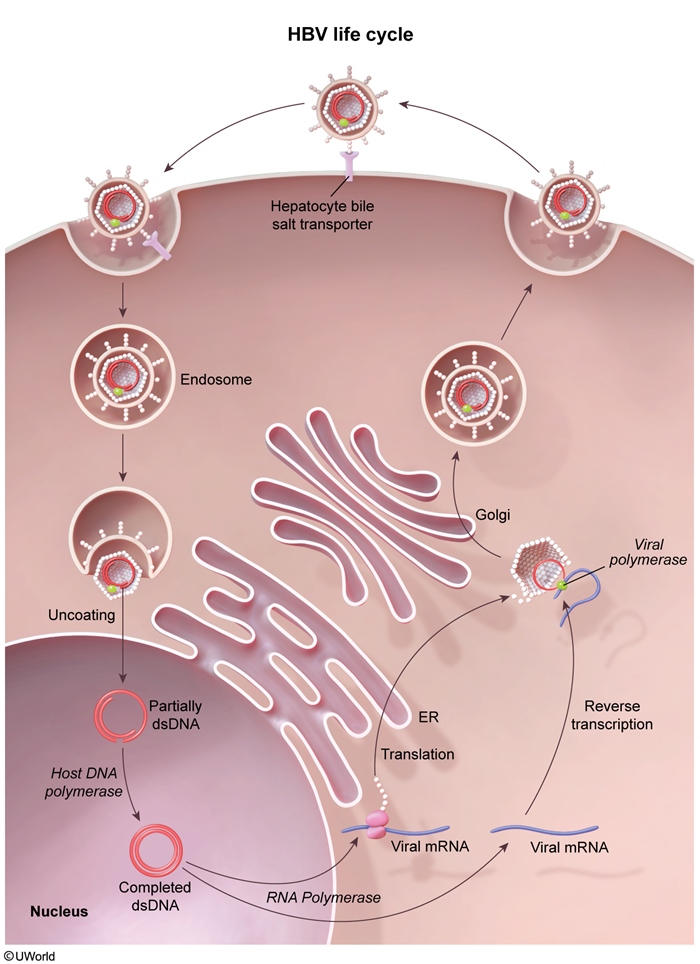
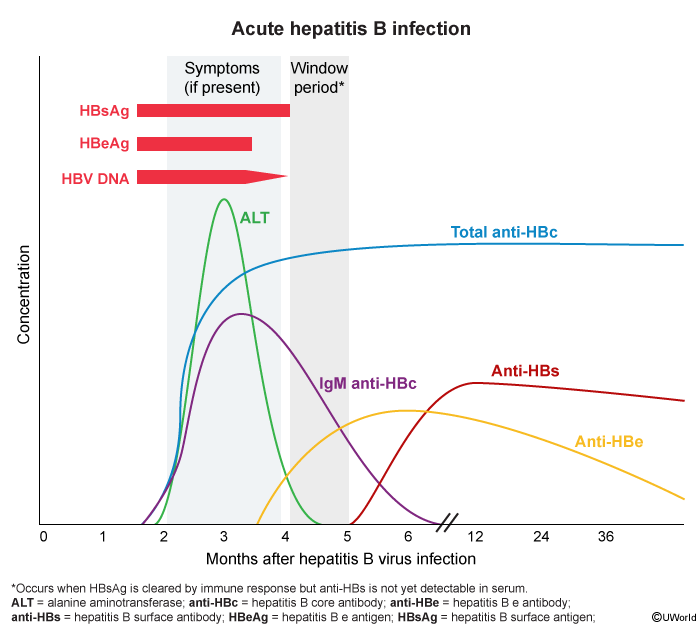
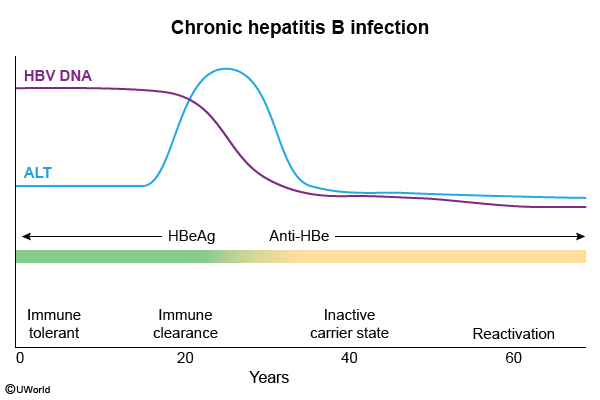
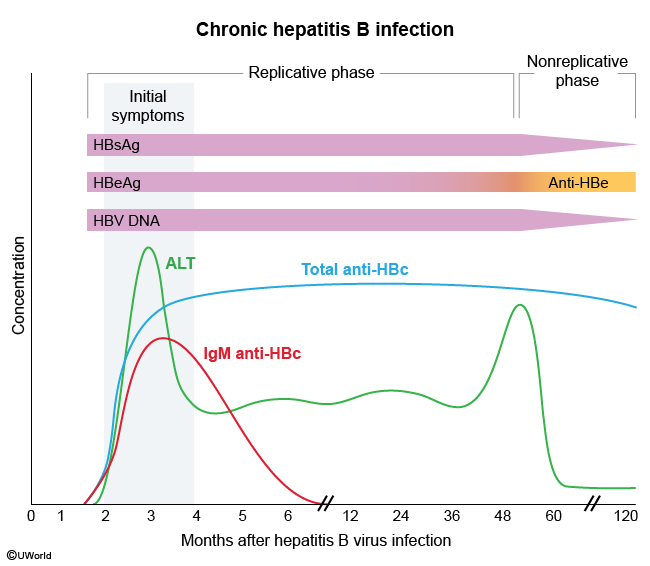
Images
